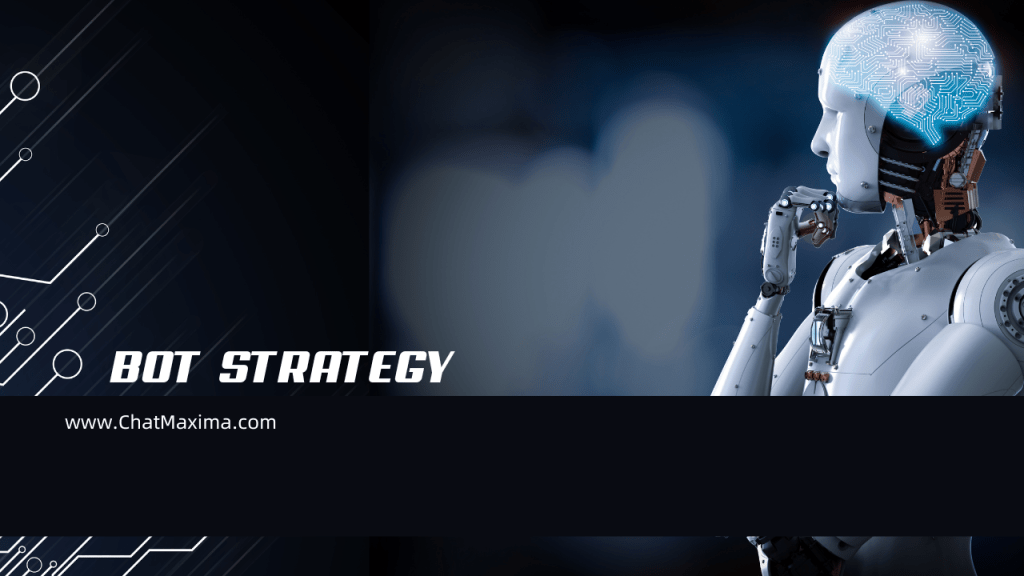In an increasingly connected and digital world, the role of chatbots has become more prominent. These AI-powered conversational agents have the potential to revolutionize customer support, enhance user experiences, and streamline business operations. To maximize their effectiveness, it is essential to develop a comprehensive bot strategy. A bot strategy encompasses a set of guidelines, principles, and techniques aimed at optimizing the performance, usability, and value of chatbot systems. By strategically planning the design, implementation, and evolution of chatbots, organizations can harness their full potential and deliver exceptional interactions with users. This article explores key considerations and actionable strategies for building and evolving successful chatbot systems, ensuring that they align with business objectives, user needs, and ethical considerations. From enhancing context understanding to personalization, emotional intelligence, and beyond, a well-crafted bot strategy lays the foundation for creating intelligent conversational agents that drive meaningful engagement and deliver value in the future.

Define your objectives: Start by identifying the specific goals you want to achieve with your bot strategy. Are you looking to improve customer support, increase sales, streamline operations, or enhance user engagement? Clearly defining your objectives will guide the rest of your strategy.
Identify use cases: Determine the areas of your business where bots can add value. Common use cases include customer support, lead generation, sales assistance, order tracking, appointment scheduling, and personalized recommendations. Identify the processes that can be automated or improved using bots.
Choose the right platform: Select a bot platform that aligns with your business needs. There are various options available, including chatbot platforms, voice assistants, and social media bots. Consider factors such as ease of use, integration capabilities, scalability, and the ability to customize the bot’s behavior.
Understand your audience: Gain a deep understanding of your target audience’s preferences, pain points, and communication preferences. This knowledge will help you design bot interactions that are personalized, relevant, and valuable to your customers.
Design user-centric conversations: Create conversational flows that are natural, intuitive, and user-friendly. Plan out different dialogue paths for various scenarios and anticipate potential user responses. Use techniques such as natural language processing (NLP) to enable the bot to understand and respond appropriately to user inputs.
Leverage personalization and context: Incorporate personalization into your bot strategy to enhance the user experience. Use data about the user’s preferences, history, and behavior to deliver tailored recommendations, offers, and support. Ensure that your bot can remember previous interactions to provide contextual responses.
Test and iterate: Continuously test and refine your bot strategy to optimize its performance. Conduct user testing to gather feedback and make necessary improvements. Monitor bot analytics to gain insights into user behavior, identify bottlenecks, and enhance the bot’s effectiveness over time.
Provide seamless Handovers:Design your bot strategy to seamlessly transition from bot interactions to human assistance when needed. Implement escalation mechanisms and ensure that users can easily connect with a human agent for complex queries or situations that require a personal touch.
Handovers: Design your bot strategy to seamlessly transition from bot interactions to human assistance when needed. Implement escalation mechanisms and ensure that users can easily connect with a human agent for complex queries or situations that require a personal touch.
Maintain bot performance: Regularly update and maintain your bot to keep up with changing user needs and technology advancements. Monitor the bot’s performance, track metrics such as response time and user satisfaction, and make necessary adjustments to ensure a high-quality user experience.
Faster continuous improvement: Actively gather user feedback and use it to refine your bot strategy. Keep an eye on emerging trends, new technologies, and industry best practices to stay ahead of the curve. Encourage customer feedback and engage in ongoing conversations to identify areas for improvement.
Remember, a winning bot strategy requires a customer-centric approach, continuous optimization, and a commitment to delivering value to your users. By following these steps, you can develop a bot strategy that boosts efficiency, enhances customer experiences, and drives business success.
Developing a robust bot strategy is essential for harnessing the full potential of chatbot systems in the ever-evolving digital landscape. By incorporating key considerations such as context understanding, personalization, emotional intelligence, and ethical considerations, organizations can create chatbots that deliver exceptional user experiences. Furthermore, embracing multi-modal capabilities, continual learning, and collaboration with users on task-oriented activities can further enhance the effectiveness and versatility of chatbots. Transparent and explainable AI processes ensure user trust and understanding. Ultimately, a well-crafted bot strategy enables organizations to leverage chatbots as valuable tools for customer support, streamlined operations, and driving meaningful engagement. By staying proactive, adaptive, and responsive to emerging technologies and user needs, organizations can position themselves at the forefront of AI-driven conversational interfaces, creating a future where chatbots become indispensable companions in our daily interactions.
